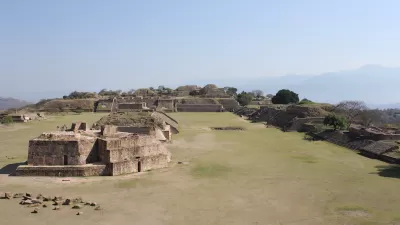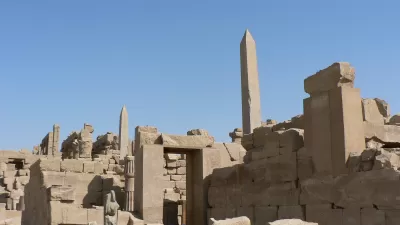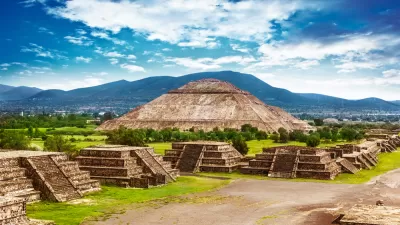An archaeological site shows evidence of a unique layout of dense residential buildings interspersed with a network of roads and farmland.

A set of newly unearthed ancient ruins reveal a unique style of ‘garden urbanism,’ writes Kiona N. Smith in Scientific American.
The site, in Ecuador’s Upano Valley, features “more than 6,000 earthen platforms that once supported houses and communal buildings in 15 urban centers, set amid vast tracts of carefully drained farmland and linked by a network of roads.” The layout is unique to Amazonia, with the nearest similar design seen in Central America.
According to Smith, “Nearly all the open space between communities would have been covered with hundreds of hectares of fields, bordered by shallow drainage ditches that fed into deeper canals. That close link between the fields and the urban centers of the Upano Valley is a unique hallmark of the landscape and the people who built it.” The site, known as Sangay, was likely built around 2,500 years ago.
Researchers say the Huapula, who still live in the region, moved into the site after it was abandoned between roughly 300 and 600 C.E. to take advantage of the existing infrastructure.
FULL STORY: Ancient Amazon Civilization Developed Unique Form of ‘Garden Urbanism’

Trump Administration Could Effectively End Housing Voucher Program
Federal officials are eyeing major cuts to the Section 8 program that helps millions of low-income households pay rent.

Planetizen Federal Action Tracker
A weekly monitor of how Trump’s orders and actions are impacting planners and planning in America.

The 120 Year Old Tiny Home Villages That Sheltered San Francisco’s Earthquake Refugees
More than a century ago, San Francisco mobilized to house thousands of residents displaced by the 1906 earthquake. Could their strategy offer a model for the present?

HSR Reaches Key Settlement in Northern California City
The state’s high-speed rail authority reached an agreement with Millbrae, a key city on the train’s proposed route to San Francisco.

Washington State Legislature Passes Parking Reform Bill
A bill that would limit parking requirements for new developments is headed to the governor’s desk.

Missouri Law Would Ban Protections for Housing Voucher Users
A state law seeks to overturn source-of-income discrimination bans passed by several Missouri cities.
Urban Design for Planners 1: Software Tools
This six-course series explores essential urban design concepts using open source software and equips planners with the tools they need to participate fully in the urban design process.
Planning for Universal Design
Learn the tools for implementing Universal Design in planning regulations.
Ada County Highway District
Clanton & Associates, Inc.
Jessamine County Fiscal Court
Institute for Housing and Urban Development Studies (IHS)
City of Grandview
Harvard GSD Executive Education
Toledo-Lucas County Plan Commissions
Salt Lake City
NYU Wagner Graduate School of Public Service





























